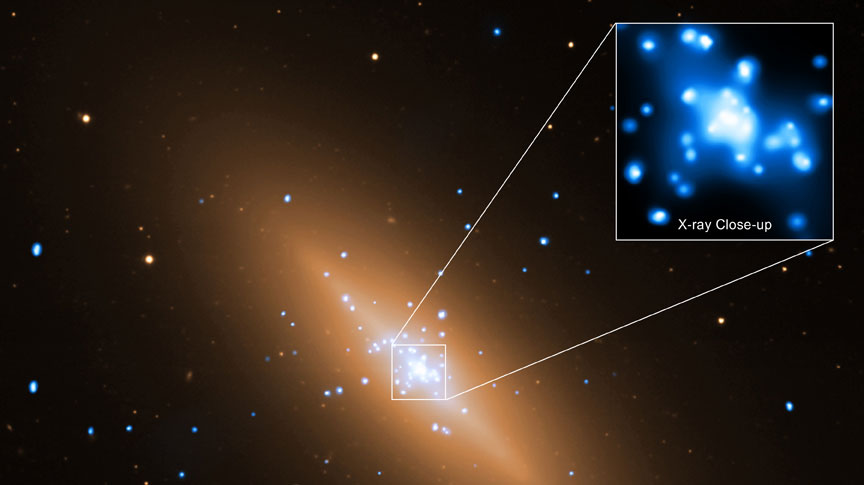The flow of hot gas flowing towards a black hole has been clearly imaged for the first time in X-rays taken by NASA’s Chandra X-ray and a study led by four astronomers at the University—Ka-Wah Wong, Jimmy Irwin, Mihoko Yukita and Evan Million.
The evidence they have found is important because it helps astronomers understand how black holes grow and how matter behaves in their intense gravity, in the study led and written by Wong and published in “The Astrophysical Journal Letters.”
The supermassive black hole is in the center of the galaxy NGC 3115, which is located about 32 million light-years from Earth. The black hole, with a mass of about two billion times the size of the Sun, is the closest black hole of that size to earth.
Irwin, an assistant professor in the department of physics and astronomy and co-author, said this evidence is groundbreaking because it is the first time the hot gas within the influence of a black hole has been spatially resolved.
“We can see hot gas around many other black holes, but we can not determine any spatial structure in the gas right around the black hole,” Irwin said. “The sphere of influence of the black hole in NGC 3115 is large and close enough that Chandra can detect how the density of the gas is changing within the sphere.”
This makes this the only black hole where the flow of gas can be observed, Irwin said.
By imaging the hot gas at different distances from this supermassive black hole, astronomers have observed a critical threshold where the motion of gas first becomes dominated by the black hole’s gravity and falls inward. This distance from the black hole is known as the “Bondi radius.”
With this study, Irwin said they were awarded with a million more seconds of imaging at the Chandra X-ray Observatory from the X-ray Visionary Projects and will begin obtaining better temperature and density values of the black hole to further their studies.
The Chandra X-ray is in orbit because X-rays from space are absorbed by the earth’s atmosphere, according to Peter Edmonds, an astrophysicist at the Chandra X-ray Center in Cambridge, Mass. He said the mirrors on the telescope are used to focus the X-rays and make the sharp images that Chandra is renowned for.
And for a sum of the definition of a black hole, Edmonds compares it to launching a rocket: What is a black hole?
“I like to think in terms of escape velocity, which is the speed a rocket must attain on launch to escape from an object’s gravity. If you made the object more massive without changing its size, the escape velocity of the object would increase. That is you’d need to blast off at a higher speed to escape. If you add so much mass to the object that the escape velocity exceeds the speed of light, then nothing can escape the object’s gravity, including light. You then have a black hole.”









